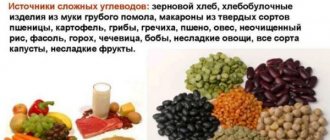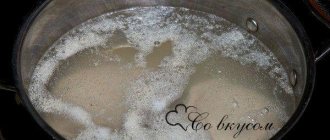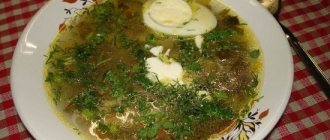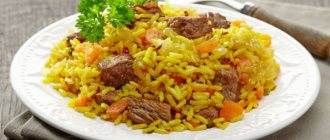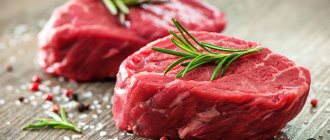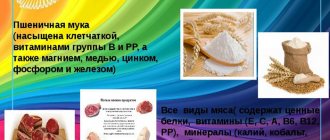Borscht is one of the most popular first courses in Slavic cuisine. In Rus', borscht has been known for many centuries; sayings and proverbs are dedicated to it. And there is nothing surprising about this. After all, the traditional recipe for red soup includes only natural ingredients that are beneficial to the human body. This is a perfectly balanced and satisfying first course that can cover your daily energy requirement. But does it allow you to lose weight? What is the calorie content of borscht prepared according to different recipes?
Calorie content of borscht with beef
Most often, a hearty and nutritious soup for the whole family is prepared with beef (on the bone or with fillet). What is the energy value of classic borscht? Calculating the calorie content of the first course per 100 grams, we get 50.1 kcal. The BJU of such a soup, which is prepared by cooking without draining, is:
- proteins - 3.9 g;
- fats - 2.5 g;
- carbohydrates - 3.1 g.
Considering that the traditional portion served in a deep plate is 250 grams, 1 plate contains 125.3 kcal. At the same time, BZHU is presented in 9.8/6.3/7.8 g, respectively.
If you use fresh cabbage instead of sauerkraut to prepare borscht, the energy value and other indicators will be higher.
Calorie content of borscht with chicken
Less often (but this interpretation also occurs) borscht is cooked with turkey or chicken. It contains a standard set of ingredients. The only exception is meat - usually chicken breast. This option without frying gives only 28.4 kcal per 100 grams of the finished dish. The BJU in borscht with chicken broth will be as follows:
- proteins - 1.9 g;
- fats - 0.4 g;
- carbohydrates - 4.4 g.
The energy and nutritional value of the soup will increase if you use chicken with skin. But refusing to add potatoes will reduce these indicators.
ABC RECOMMENDS
Calorie content of boiled, fried, baked chicken: table per 100 grams
Step by step recipe
- Let the chicken broth simmer. Rinse a piece of chicken, put it in a three-liter saucepan, add cold water and put on high heat. Peel the onion and one carrot. Shortly before boiling, remove the foam from the broth, and as soon as it starts to boil, add the onion and carrots, bring to a boil again, reduce heat and cover with a lid.
- Prepare the potatoes. After about 30 minutes from the start of cooking the broth, peel the potatoes and cut into small pieces.
- Remove the chicken and strain the broth. Once the meat comes off the bone fairly easily, remove the chicken and set aside to cool. Strain the broth, discarding the carrots and onions, and bring to a boil again.
- Add potatoes. Pour the potatoes into the boiling broth, stir, bring to a boil, reduce heat and cover with a lid.
- Prepare roasted carrots. Pour vegetable oil into a cold, dry frying pan and heat over high heat. While the oil is heating up, peel the carrots and grate them on a coarse grater or cut them into thin strips. Add the carrots to the hot oil and fry, stirring constantly, until the carrot pieces can be easily broken off with the edge of a spoon. Remove the pan from the heat and continue stirring until the oil stops boiling, then cover the pan with a lid.
- Return chicken to soup. Separate the chicken meat from the bone and cut into small pieces across the grain. Pour the chopped meat into the soup, stir, bring to a boil, reduce heat and cover with a lid.
- Cut the sorrel.
- Check the potatoes for readiness. If the potato pieces mash effortlessly into a puree with the back of a spoon on the side of the pan, you are good to go.
- Add fried carrots to green borscht and add salt. First add the roast and stir. Then add salt, stir again, bring to a boil, reduce heat, cover with a lid and let simmer for 1-2 minutes.
- Add sorrel to green borscht. Stir, bring to a boil, reduce heat, cover and let simmer for 2-3 minutes.
- Add eggs to green borscht. Beat raw eggs in a small container. Then pour the resulting mass into the pan, stirring vigorously constantly. Bring to a boil, reduce heat, cover with a lid and let simmer for 2-3 minutes.
- Chop the greens.
- Add greens to green borscht. Stir, bring to a boil, reduce heat, cover with a lid, let simmer for 1-2 minutes and remove the pan from the heat.
- Green borscht with chicken broth is ready! When serving, season the green borscht with sour cream.
Sorrel soup
The nutritional value:
- Calories: 62 kcal.
- Proteins: 1.6 g.
- Fat: 2.5 g.
- Carbohydrates: 4.7 g.
Bon appetit!
Calorie content of borscht with sour cream
Traditionally serving borscht at the table involves adding sour cream. But keep in mind: on average 1 tbsp. A spoonful of sauce adds another 25 units to the standard calorie content of the dish. It turns out that if the energy value of homemade soup prepared with beef broth is 50 units, then a serving of borscht with a spoonful of sour cream comes out to 75 kcal.
Photo source: shutterstock.com
What is the BJU of such a first course? Of course, it can be prepared in different ways, and this ratio depends on the selected components. But if you cook borscht according to the classic recipe and add 1 tbsp per 100 g. l. sour cream, then the output can be 5.1 g of carbohydrates, 3.6 g of fat and 4.2 g of protein.
If you use mayonnaise rather than sour cream as a dressing for borscht, then the calorie content of even the lean version will be higher.
Calorie content of classic borscht
We took the classic recipe as the starting point for calculating the energy value of red cabbage soup:
- Chicken thigh for rich broth is the best choice. To prepare 3-4 liters of soup, you can take 400-600 g of legs, the calorie content of which will be 740-1100 kcal (100 g = 185 kcal). If you prepare soup from a “lighter” chicken breast, then the calorie content of the soup will be significantly reduced, because one hundred grams of white fillet contains only 113 kcal, which is 678 kcal in terms of 600 g.
- White cabbage - 27 kcal, which in terms of 500 g needed for soup is 135 kcal.
- Potatoes in classic borscht are an indispensable product. Three medium tubers will be enough, in total, plus another 228 kcal.
- Dressing for borscht is usually prepared from one carrot (75 g = 24 kcal), one onion (75 g = 35 kcal), 2 tbsp. tomato paste (46 kcal) and pre-boiled beets (150 g = 74 kcal) by frying and sautéing with the addition of vegetable oil (40 g = 360 kcal). Summing up all the components, we find that the dressing has a calorie content of 539 kcal.
- At the very end of cooking, a finely chopped bunch of greens, which weighs 40 grams (15 kcal) and chopped garlic (16 g = 23 kcal), are added to the borscht.
In total, 4 liters of chicken borscht with breast comes out to 1617 kcal (42.6 kcal/100 g), and borscht with legs is 2049 kcal (51.6 kcal/100 g).
However, do not forget that when serving borscht, sour cream is also offered, the energy value of which, depending on the fat content, varies from 133 to 380 kcal, or mayonnaise, the calorie content of which is on average 660 kcal or 220 kcal if you decide to use “light” Calve."
Composition and nutritional value of borscht
What valuable substances are included in this beloved soup? The nutritional value of red and green borscht is explained by the fact that it contains:
- dietary fiber;
- iron;
- vitamin B6;
- potassium;
- zinc;
- biotin;
- vanadium;
- vitamin PP;
- iodine;
- vitamin D;
- sodium.
It also contains ascorbic acid, vitamin B12, calcium, vitamins A and E, lithium, sulfur, chlorine, tin, fluorine and many other valuable microelements and nutrients.
Daily intake of borscht
How much borscht can you eat every day? The exact amount depends on the person's needs and lifestyle. This dish contains most of the valuable vitamins and micronutrients. Therefore, if you wish, you can only eat borscht.
Photo source: shutterstock.com
But here you need to take into account that people employed in heavy production require 4000-5000 kcal per day. If you lead a sedentary lifestyle, then the number of required kilocalories drops to 2500.
Knowing the energy value of a particular type of dish, it will not be difficult to independently calculate the daily intake. For example, if the average calorie content of beef borscht is about 100 kcal per 100 grams, then you can eat a lot of it every day.
What is the calorie content of a plate of borscht?
We figured out the calorie content of borscht per 100 grams of ready-made dish. But this is not entirely convenient for calculations. Therefore, now we will talk about the calorie content of 1 plate of borscht.
It’s worth noting right away that the sizes of the plates vary. On supermarket shelves you can find both giant plates that hold 500-600 milliliters of liquid, and small plates with a volume of only 200 milliliters. Therefore, to know exactly the capacity of your plate, fill it with water, and then pour the water into a measuring glass (you can do it in several steps), then you will know exactly how much liquid your dish can hold and what the calorie content of a plate of borscht is.
For example, let's take a standard portion (300 grams). Accordingly, the calorie content of a plate of borscht (classic) will range from 90 to 550 kcal. But if you decide to add sour cream or toasted crackers to the borscht, the calorie content will increase in accordance with the calorie content of the additives. Therefore, we strongly recommend that people who are on a diet or have heart problems do not overuse rich borscht with various high-calorie additives.
Delicious recipe! How to cook delicious shark steak
The calorie content of a standard plate of green borscht ranges from 110 to 515 kcal. Follow the same rule here. Do not overeat fatty foods. It will not benefit your body, but will only complicate the work of the heart, contribute to the formation of blood clots and blockage of blood vessels.
The benefits and harms of borscht
What are the beneficial properties of borscht? If we are talking about soup made with meat broth, traditional in Russian and Ukrainian culture, then we can safely talk about its positive properties for the health of adult men and women, as well as children.
Photo source: shutterstock.com
So what is this soup good for our body? The secret of borscht is simple - due to a balanced combination of proteins, enzymes, fats, vitamins, minerals and carbohydrates, the dish is optimal for nutrition. Red borscht (like its green version with sorrel and egg) allows you to:
- normalize the functioning of the gastrointestinal tract;
- improve the functioning of the intestines and stomach;
- provide the body with fiber due to the high content of vegetables;
- strengthen human immunity.
In addition, after heat treatment, vegetables turn into a useful and delicate sorbent, which gently but effectively removes toxins, nitrates, heavy metals, waste and radionuclides from the human body.
Borscht also has a beneficial effect on metabolic processes and promotes weight loss. The substances contained in its composition are involved in the mechanism of hematopoiesis and the prevention of diabetes mellitus.
Photo source: shutterstock.com
But in some cases, borscht may not be harmless at all. When does it harm the body? The danger occurs with certain contraindications:
- pancreatitis;
- cholecystitis;
- kidney diseases, especially during exacerbation.
In addition, carrots and cabbage, which are necessarily included in the recipe, are leaders in the degree of nitrate absorption. Accordingly, they give them to us. To avoid harm from borscht, it is recommended to use only high-quality vegetables, preferably from your own garden.
ABC RECOMMENDS
Boiled potatoes: calorie content, benefits and harms, nutritional value
Borscht calorie table
To make it easier to navigate the calorie content of various interpretations of this first dish, use the table:
| Borsch | Calorie content per 100 g (kcal) |
| With porcini mushrooms | 20 |
| Siberian | 48 |
| Cold summer | 49 |
| Ukrainian | 49 |
| With sorrel and bulgur | 35 |
| With pork stew | 35,9 |
| With minced chicken and broccoli | 78,8 |
| With chicken in the oven | 47,5 |
| With beans without meat | 65,1 |
| Pork ribs with boiled beans | 67,2 |
Cooking green borscht with sorrel and nettles
I’ll finish the topic of green borscht with another recipe in a slow cooker, but with nettles and sorrel. It will turn out very tasty.
Prepare the following products:
- chicken leg – 1 pc.;
- potatoes – 6 pcs.;
- carrots and onions - 1 pc.;
- chicken eggs – 3 pcs.;
- sorrel and nettle (fresh) – a bunch;
- salt, herbs and spices - to your taste.
Cooking time – 1 hour 20 minutes.
Begin?
1. On the multicooker, activate the “Frying” mode. Pour in a few tablespoons of vegetable oil.
2. Peel and chop the onion. Grate the carrots. Then put all the ingredients in the bowl and start sautéing.
3. After 5 minutes, add the chicken leg to the grill for a minute and lightly fry.
Chef's tip! If you prefer cholesterol-free products, then be sure to remove the skin from the bird.
4. Peel, cut as desired and add potatoes. Pour boiling water over the mixture. Add salt and mix well. Turn on the “Soup” mode.
5. At this time, pour boiling water over the nettle for a couple of minutes to prevent it from pricking. Then chop it together with the sorrel.
6. In a separate bowl, whisk the eggs until smooth. 10 minutes before the end, add the greens. Pour in the egg in a thin stream and mix well. We leave to finish cooking.
When ready, separate the meat. Then you can pour it into plates. Bon appetit.


